Hidden at the back of a dusty type case at the Cranky Press lies a scrap of typographic history that no one wants to remember. There are about a dozen of these blocks: bizarre, offensive renditions of ethnicity that reflect our Western heritage of privilege, racism and bigotry.
I’m not sure why I’ve kept all these blocks. In fact, whenever I clean and purge my little print shop, I always think about tossing them in the garbage bin. But I don’t. Maybe it’s the historian in me. Maybe there’s a notion that somehow I need to inculcate responsibility for these cultural representations of our past. I look at them occasionally; I think about them often.
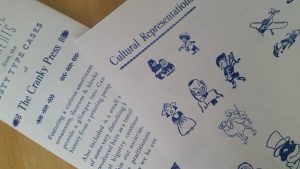
I worry that many of us who now practice the Black Art have tended to romanticize the history of letterpress printing. It is such a beautiful and meticulous process – one that we embrace with open hearts and happy enthusiasm – that we have difficulty believing that it was ever used to promote such ugly and hateful notions of race or gender or diversity. I need to remind myself that it’s a myth to believe the “power of the press” has always served a higher and noble objective – that is, to improve the human condition. It hasn’t – and the blocks in my type case are proof of that. So they’ve sat there for years. Hidden at the back of a type case like a dirty little secret.
Until now.
With media accounts of a truly offensive American presidential candidate, who relies on bigotry and ignorance to appeal to the basest of his base, I’ve decided to print these blocks once more. I’m shocked by the rise of xenophobic violence and bigotry we’ve seen in the past eight months; shocked at how close to the surface this behavior lurks within so many of us; shocked by the fact that as a Western society, we really haven’t made much progress since the days when these blocks were first created.
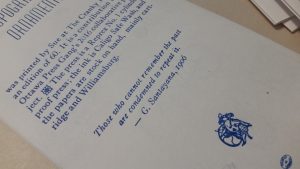
With apologies to my fellow Gangsters of the Ottawa Press Gang – whose 2016 annual collaborative project [Typographic Ornaments] I’ve adopted as the platform for my minuscule rant (in 60 copies) on the ugly past of our printing history – I print this as a cautionary tale — that our current cultural mood that will to condemn us to a future of intolerance and ignorance.
Alas, bigotry is alive and well in these modern times.
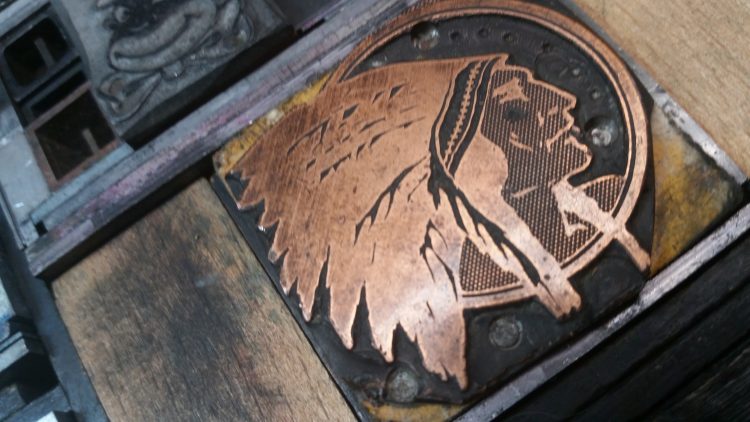
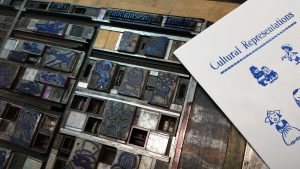
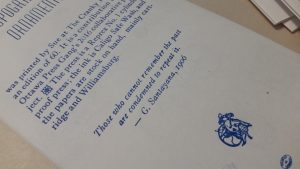
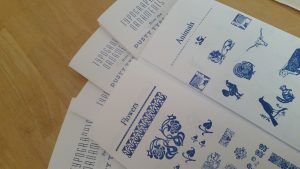
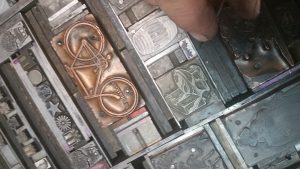
This is a really neat post. I am envious that you live and work near/among a community of printers. I wish I had something like the Ottawa Press Gang here in Fayetteville, North Carolina so that I could share ideas, get feedback and maybe even lease a font or two for a short while. That is a real blessing to have a community of compatriots so close to you. Do they accept “at large” members?
The format you chose for your platform is really cool. I have been pulling proofs of samples of my fonts and the occasional cut and border, but I use these primarily for digitizing and cataloging what I have in a FileMaker Pro database. I had not thought of putting a pamphlet or trifold together as you did for this project. (Proofing, for me, is a bit of a chore, as I do not have a flatbed proofing press like a Vandercook and I have to lock everything up as a form, put it on the Gordon Jobber, get position, makeready and then pull a print. I intend to experiment with a planer proof–one thing my dad never taught me–at some point.)
Anyway, as to the matter in your project, I find it less offensive than some newer printed pieces that letterpress artists have created. While I can’t say that I know of many projects that call for these caricatures of ethnicity, I would like to believe that those who designed and cast them originally did not mean to offend anyone in the process. Rather, perhaps, they had not considered how to graphically represent the “otherness” of cultures foreign to their own. It may be revisionism on my part (and the apparent Asian man is certainly more repugnant than what looks to be a Dutch girl), but I think these reflect a time in space more than they do an attitude toward one or more peoples.
Thank you for a thought provoking post, and for preserving these little pieces of history…no matter how distasteful they are to our current and more enlightened sensibilities.
Thanks, Jim, for your thoughtful comments.
The members (“gangsters”) of the OPG are very lucky to have found each other over the past several years. We’d started the group several years ago when we met at a letterpress workshop in Kingston (2 hours away from Ottawa). We were all newbies, having little technical expertise, all desperate to learn more – and no one in Ottawa to guide us. For a while, it was very much the blind leading the blind! Over time, the group has expanded to about 15 – 20 gangsters, many of whom have their own studios or print shops; some who are just starting out. Once a month group meets (at a pub!) for an informal “show-and-tell” where we can exchange ideas, ask questions, get help. Yes, we’re lucky to have each other. I’ll ask our “communication guy” (there are no official positions!) to add your name to the email list if you wish. Some interesting bits come our way — and if you’re ever up in Ottawa, of course, you’re welcome to sit in!
Each year, the OPG organizes a group project; participation is always optional, since many members don’t always have time or access to equipment to participate. It’s usually a small pamphlet on a chosen theme – and I have to admit, I haven’t contributed to very many projects lately. Still when the idea of an ornament sampler came up, I thought this would be a good occasion to broach the topic of those dreadful blocks.
In photographing the project, I deliberately avoided taking pictures of some of the truly awful blocks (e.g. the Eskimo and black caricatures are not shown), but I really struggled with the decision to print them at all. The photos in the article reveal only a few of the least offensive pieces. I also spent a little time browsing through old newspapers online (i.e. google newspaper project) to see if I might spot any blocks similar to mine — and if so, what they may have been used for. While I didn’t find any examples of my own blocks, there were still plenty of offensive cultural renditions there – mostly in advertisements – but still. In printing the pamphlet, I just wanted to signal that it’s been a long road to developing an inclusive and respectful society – and we’re not quite there yet, but I fear that it’s in jeopardy today thanks to the thoughtless bombast of one presidential dolt – and the many who see him as a leader. Ok, I’ll get off my soapbox now! 🙂
Thanks again,
Sue